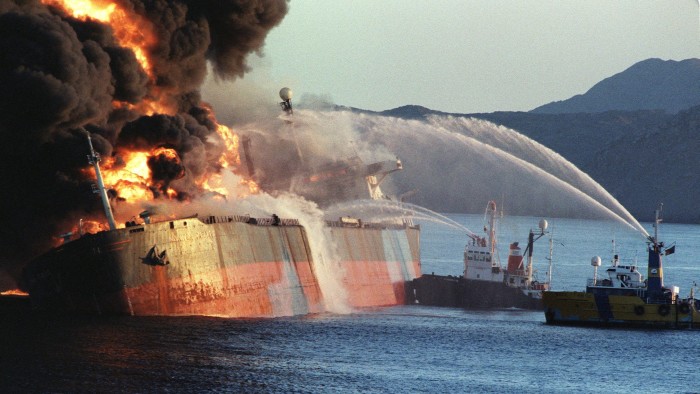As tensions escalate in the Persian Gulf, the specter of a renewed “tanker war” looms, reminiscent of the 1980s conflict between Iran and Iraq. This volatile situation is underscored by the crucial role the Strait of Hormuz plays in global oil and gas trade, where approximately 25% of the world’s seaborne oil and 20% of natural gas exports pass.
In response to recent U.S. airstrikes, Iranian lawmakers have suggested shutting down the Strait of Hormuz, though any such decision would require approval from the Supreme National Security Council. An insider within the Iranian regime indicated that there are currently no radical measures under consideration, including the closure of the strait.
Analysts warn that in the event of a prolonged conflict with the U.S., Iran’s naval forces could resort to tactics reminiscent of the past, utilizing relatively low-cost weaponry to threaten shipping through the strait. These tactics may include laying sea mines similar to those used during the earlier tanker war.
Sid Kaushal, a naval warfare expert, noted, “Much depends on factors like whether [Iran] can lay mines before the U.S. can bomb stockpiles and how survivable their coastal anti-ship missile batteries are. Eventually, the U.S. will break through. But if the Iranians move first, it could be costly, time-consuming, and potentially not without casualties.”
The Iranian Revolutionary Guard could potentially lead any attempts to block the strait under the guidance of Rear Admiral Abbas Gholamshahi. According to a report by the Foundation for Strategic Research, he has been assigned the task of deploying naval mines, drones, and fast boats to secure the waterway. Nick Childs of the International Institute for Strategic Studies stated, “Iran has developed… a considerable array of asymmetric [naval] capabilities. If used in a comprehensive campaign, these could cause significant disruption for U.S. and other western naval units.”
Clearing mines from the Strait of Hormuz would pose a challenge for the U.S. Navy, which has stationed outdated Avenger-class mine-sweeping vessels and a littoral combat ship at its base in Bahrain. Analysts express concerns that these aging vessels are not equipped to effectively handle a minefield in the strait. Ethan Connell pointed out, “We just don’t have the mine-sweeping capability to deal with a full-on mined Strait of Hormuz. The mine sweepers in the Fifth Fleet… have been called some of the least reliable ships in the [U.S.] Navy.”
If Iran were to mine the strait, it would likely provoke a significant U.S. military retaliation, further complicating a region where the main shipping routes for oil not only serve Iran but also Saudi Arabia and other Gulf states. Vice President JD Vance remarked, closing the strait would be “suicidal… for the Iranians. Their entire economy runs through the Strait of Hormuz… Why would they do that?”
Insiders have suggested that Tehran may choose to escalate attacks on Israel rather than confront the full might of the U.S. military. Former Israeli military intelligence chief Amos Yadlin said, “The Iranians have to think: do we want to bring all [the American] might against us?”
Even if the U.S. manages to reopen the strait after an Iranian closure, the aftermath could severely impact oil markets. Shipments and insurance costs are expected to surge, and there are no viable alternatives for Gulf oil supplies passing through this critical chokepoint. Kaushal noted that Iran could achieve strategic success by driving up prices, even if they cannot permanently close the strait.
Burcu Ozcelik from the Royal United Services Institute remarked, “Closing the strait could trigger global economic shockwaves and runs counter to Iran’s own interests. Tehran’s next move may determine whether this war expands — or ends in uneasy, and possibly temporary, restraint.”

